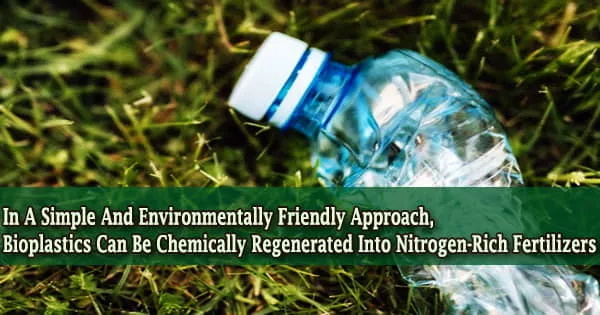Over the last century, plastics have taken the globe by storm, with applications in almost every facet of our lives. However, the rise of synthetic polymers, which are the building blocks of plastics, has resulted in a slew of major environmental problems.
The worst of these is the overuse of petrochemical compounds and the non-recycling of non-biodegradable materials; just 14% of all plastic trash is recycled, barely making a dent in the problem.
To address the plastic problem, we need to create “circular” systems in which the raw materials used to make plastics are recycled and returned to the source. A group of scientists from the Tokyo Institute of Technology, coordinated by Assistant Professor Daisuke Aoki and Professor Hideyuki Otsuka, is developing a revolutionary concept.
Plastics made from biomass (bioplastics) are chemically regenerated into fertilizers in their new environmentally friendly process. This discovery will be published in Green Chemistry, a Royal Society of Chemistry journal dedicated to cutting-edge research on sustainable and environmentally friendly technology.
The researchers focused on poly (isosorbide carbonate), or “PIC,” a bio-based polycarbonate that has received a lot of attention as a potential replacement for petroleum-based polycarbonates. Isosorbide (ISB), a non-toxic substance generated from glucose, is used as a monomer in the production of PIC.
The fascinating component is that ammonia (NH3) can be used to break the carbonate connections that connect the ISB units in a process known as ‘ammonolysis.’
Urea, a nitrogen-rich chemical that is commonly utilized as a fertilizer, is produced in this process. While science has long known about this chemical reaction, few studies on polymer degradation have looked at the possible uses of all degradation products rather than just the monomers.
The reaction occurs without any catalyst, demonstrating that the ammonolysis of PIC can be easily performed using aqueous ammonia and heating. Thus, this procedure is operationally simple and environmentally friendly from the viewpoint of chemical recycling.
Dr. Aoki
First, the researchers looked at how successfully complete ammonolysis of PIC could be carried out in the water at low temperatures (30°C and atmospheric pressure). This decision was made in order to avoid using organic solvents and wasting a lot of energy.
The researchers used nuclear magnetic resonance spectroscopy, Fourier transforms infrared spectroscopy, and gel permeation chromatography to thoroughly examine all of the reaction products.
Even after 24 hours, the degradation of PIC was not complete, with several ISB derivatives remaining present, despite the fact that they were able to create urea this way. As a result, the researchers increased the temperature and discovered that at 90°C, total disintegration could be achieved in roughly six hours!
Dr. Aoki highlights the benefits of this approach, “The reaction occurs without any catalyst, demonstrating that the ammonolysis of PIC can be easily performed using aqueous ammonia and heating. Thus, this procedure is operationally simple and environmentally friendly from the viewpoint of chemical recycling.”
Finally, the scientists conducted plant growth studies with Arabidopsis thaliana, a model organism, as proof of concept that all PIC breakdown products can be directly employed as fertilizer. Plants treated with all PIC breakdown products grew better than plants treated alone with urea, according to the researchers.
The overall findings of this study demonstrate that building fertilizer-from-plastics systems is feasible. Not only can the systems aid in the fight against pollution and resource depletion, but they can also help fulfill the world’s growing food demand.
Dr. Aoki concludes on a high note, “We are convinced that our work represents a milestone toward developing sustainable and recyclable polymer materials in the near future. The era of ‘bread from plastics’ is just around the corner!”





